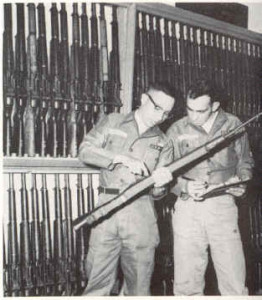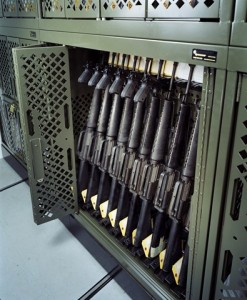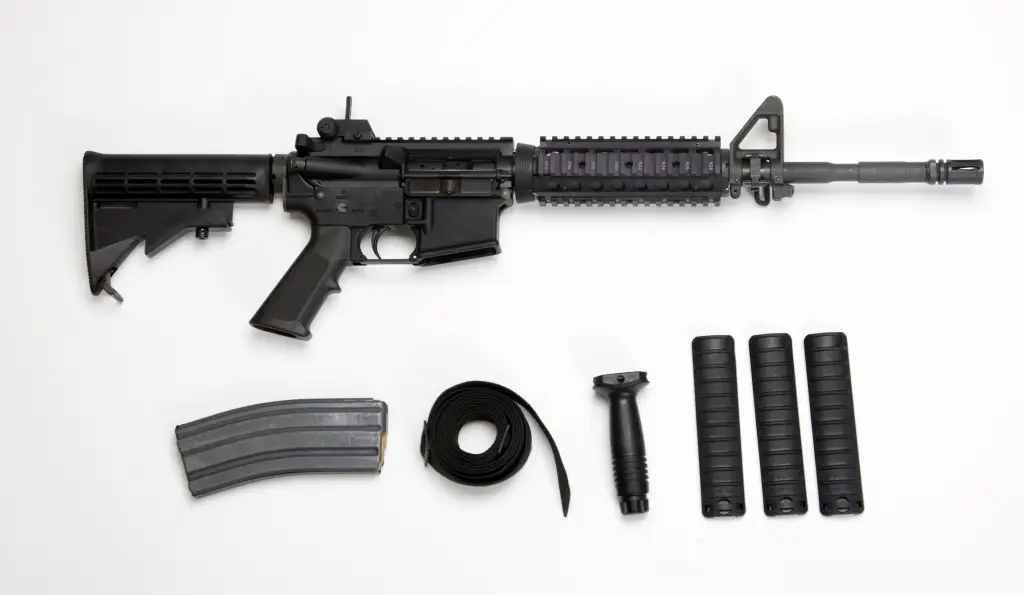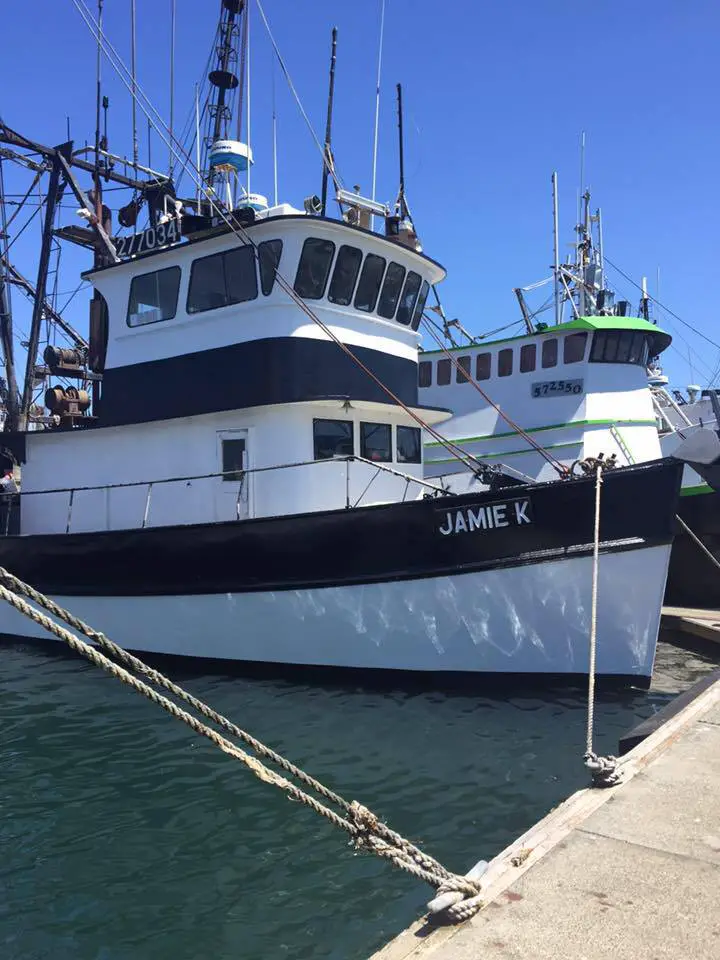Monthly Archives: July 2015
Buffalo demand respect. So what happens to today’s tee-ball narcissus generation? You know, the ones for whom life has been a constant featherbed of praise without challenge or accomplishment? The Unique and Special Snowflakes™? The sublime selfie squad who respect only their own image, graven or otherwise?
Yellowstone National Park officials are warning tourists to keep their distance after a bison flipped a woman into the air as she posed for a selfie with the massive beast.
The dangerous encounter was the fifth run-in between park-goers and buffalo this year.
Looks like she got buffaloed.
Park officials said the 43-year-old Mississippi woman turned her back on the animal to get a photo with it near the Fairy Falls trailhead just outside Old Faithful.
Someone nearby saw the woman and her daughter about 6 yards from the animal and warned they were too close just before it came at them.
They tried to run, but the bison caught the woman and tossed her with its head.
Does that make her The Bisonic Woman? And the sound when she hit, a bisonic boom?
The woman’s family drove her to a nearby clinic where she was treated for minor injuries.
“The (woman) said they knew they were doing something wrong but thought it was OK because other people were nearby,” park spokeswoman Amy Bartlett said. “People are getting way too close.”
They “were doing something wrong but they thought it was OK.” Great Googly Moogly, is there ever going to be a better marker for Unique and Special Snowflake™-hood?
In separate incidents earlier this year, bison gored a 68-year-old woman and a 16-year-old girl and tossed an off-trail teenager and an Australian tourist into the air.
Well, bison are herd animals. It could just be one rogue bull, of course. Egged on by the cows: “Bill, do that thing you do with the flying tourist again, please!”
Five bison encounters resulting in injuries is unusual during a tourist season, Bartlett said.
“We typically have one or two per year,” she said.
via Bison injures woman posing for selfie at Yellowstone Park – NY Daily News.
It’s a good job they’re not sentient, or they’d know your great-great-great-Uncle Tony was the guy who whacked their great-great-great-grandfather Lemuel, just to eat his tongue. Sure, this year the score may be Buffalo 5, White Man 0, but the buff could keep this up for centuries and not even things up.
Why did the Viper Centerpunch the Cessna?

The NTSB and Air Force are investigating a 7 July midair between an F-16CM Viper and a Cessna 150. Two aboard the Cessna died, the fighter pilot was uninjured, both planes were destroyed.
It seems clear that the father and son in the Cessna 150 didn’t suffer. The F-16CM was traveling at over 200 kts over South Carolina 7 July, when it flew through the center of the 1670 pound light plane (and its two occupants). The damaged jet continued briefly, but three minutes after the collision, the pilot ejected. Most of the jet landed in a single crater, where it exploded and burned itself out. The little Cessna and its pilots came fluttering down in pieces; some of the larger ones, like the plane’s 100-horsepower engine, never were found. The jet pilot was, thanks to dumb luck, completely uninjured, neither by the midair nor by the ejection. Any other roll of the die and this would have been a mishap with three fatalities.
As is usually the case with midair collisions, it was 11 AM on a clear day (there were scattered clouds, but they were over 1000 feet higher than the collision) with excellent visibility. As is often the case, both aircraft were clearly on radar. However, only one of them was flying under positive air traffic control, under instrument flight rules. That was the Air Force jet.
Both aircraft were on the screen and known to the controller at the time of impact, as the F-16 pilot practiced instrument approaches (these are flights down electronic beams or pathways that are used for landing in bad weather. Because they’re a perishable skill, pilots practice them routinely in good weather, as this man was doing). He was very busy; he was vectoring to start his third approach in a flight that began only 40 minutes prior, this time a TACAN approach — a military electronic beam of 1950s vintage, conceptually similar but technically different and more precise than the VORs used by civilians. Instrument flying, and especially setting up instrument approaches, demands that the pilot be head down in the cockpit to some degree (you can fight the F-16 through the HUD, but you can’t set up an approach that way. You have to set a bunch of knobs and dials inside the jet). When civilians and most multi-crew military pilots fly practice approaches, they usually have the second pilot looking out of the cockpit as a safety pilot. In a single-seat fighter, that’s not an option. The pilot began to look for the Cessna when the controller called it out to him. He didn’t see it.
The controller made several calls to the F-16 as it became clear that the jet was on a collision course with the light plane. The pilot didn’t seem to react at first, and then, when told to turn immediately, he slowly began a wide sweeping turn that was too little, too late. The Cessna was not talking to approach control (and wasn’t required to); it did have a radar transponder squawking the Mode III code (1200) for an aircraft flying under visual flight rules.
Here’s a hasty transcript of the radio traffic, reconstructed from the NTSB preliminary. CHS is the Charleston approach controller; N3601V or 01V is the Cessna, not that it appears; we’ll use F16 for the jet’s callsign. The jet was heading about 215 degrees at about 200 knots, and the Cessna about 110 degrees at about 90 knots, so they were closing rapidly.
1100:18: CHS->F16, Traffic 12 o’clock, 2 miles, opposite direction, 1,200 indicated, type unknown.
1100:18: F16->CHS, Roger, looking for traffic.
1100:26: CHS->F16, Turn left heading 180 if you don’t have that traffic in sight.
1100:26: F16->CHS, Confirm two miles?
1100:32: CHS->F16, If you don’t have that traffic in sight turn left heading 180 immediately.
1100:49 (last radar return received from Cessna)
1100:52: CHS->F16, Traffic passing below you 1,400 feet.
1101:19: F16 (transmitting blind), Mayday!
1103:17 (last radar return from F-16, indicating 300 feet, near crash site).
The NTSB preliminary does contradict itself. It says, after the 1100:32 call demanding a turn from the F-16:
Over the next 18 seconds, the track of the F-16 began turning southerly.
However, it also indicates that:
At 1100:49, the radar target of the F-16 was located 1/2 nautical mile northeast of the Cessna, at an indicated altitude of 1,500 feet, and was on an approximate track of 215 degrees.
As we noted above, 215 degrees was the jet’s heading before the commanded turn; yet it was still tracking 215 on impact, it says here. However, after the collision the F16 was observed (on radar) to track “generally southerly”.
One thing that’s very clear from this is how quickly this situation developed and went thoroughly pear-shaped. When the controller says “immediate” or “immediately,” that’s a word that gets every pilot’s attention; they only use it when time matters. And from the first traffic call to the “immediately” call was about 14 seconds. Another 17 or so seconds after that, all opportunity to avoid the crash had been lost, two men were dead and one was about to take to the silk. A little more than a half minute elapsed from the controller’s first expression of concern to the collision. A little over three minutes had passed since the Cessna lifted off its runway and was immediately picked up by the ATC radar.
NTSB will have a final transcript with the final report, months from now.
Speculation Follows
The next couple of paragraphs are speculation about a possible contributing factor in this mishap. Speculation based on early reports, while it is the bread and butter of CNN, is often unwise in aviation mishaps, because early reporting is almost always as wrong as reporters can get. But nonetheless, we’ll go ahead and speculate. Therefore, to control the depth of speculation, the only source that we have used is the preliminary report from NTSB. -Ed.
When the radar images merged and the radar image of the shredded Cessna disappeared, the planes were reporting different altitudes. The transponder of the fighter said it was at 1500 feet (albeit descending); the transponder of the Cessna showed it at 1400 feet (and climbing), seconds before the collision. Because air pressure varies from time to time and place to place, a pilot uses a knob and a dial called a Kollsman window (after its 1930s inventor) to adjust the barometric pressure. A standard day’s pressure is considered to be 29.92 inches of mercury at sea level; locally, there was high pressure (that good sunny weather!) and the setting then and there should have been 31.15.
If the pilot of the jet mistakenly set his altimeter to 31.05, his altimeter would have read 1500 feet when he was actually at 1400 (or, if the pilot of the Cessna had set his to 31.25, he’d have been 100 feet higher than his reported altitude). We’re not sure that the F-16 transponder uses the pilot’s Kollsman setting like the civilian one does. We are fairly confident that if the two planes were correctly reporting that they were both at the same altitude, the controllers would have had much more of a sense of urgency (and automatic features of the system would have flagged their attention) much earlier.
What the Investigation Can and Will Determine
The investigators may be able to tell how the altimeters were set in both planes. On the Cessna, it’s a physical knob and dial, and should preserve its last setting if it was not physically destroyed in the impact. That may have happened. Here’s what the investigators found of the wreckage:
The wreckage of the Cessna was recovered in the vicinity of its last observed radar target, over the west branch of the Cooper River. Components from both airplanes were spread over an area to the north and west of that point, extending for approximately 1,200 feet. The largest portions of the Cessna’s airframe included a relatively intact portion of the fuselage aft of the main landing gear, and the separate left and right wings, all of which were within 500 feet northwest of the airplane’s final radar-observed position. Portions of the cabin interior, instrument panel, fuel system, and engine firewall were found distributed throughout the site. The engine, propeller, and nose landing gear assembly were not recovered. The lower aft engine cowling of the F-16 was also recovered in the immediate vicinity of the Cessna’s aft fuselage, while the F-16’s engine augmenter was recovered about 1,500 feet southwest. Small pieces of the F-16’s airframe were also distributed throughout the accident site.
Just to give you an idea how thoroughly even the F-16 was parted out inflight, here is the “engine augmenter” referenced above:
Yeah, it landed on a trailer/RV park.
On the Viper, the altimeter setting should be retained in the data recorders, which were recovered in good order from the pilot’s ejection seat and the wreckage of the airplane.
The investigators were last seen dragging the river for missing parts of aircraft and people.
The investigators are likely to recommend that the Board note, among any other findings, that there are inherent limitations to the “see and avoid” principle, but, ultimately, the crew of the two aircraft failed to see and avoid one another.
The USMC Goes to the M4 for Infantry Marines
Somewhere, a cynical Devil Dog is saying that this is just to take a pound off so that maybe a female Marine can pass IOC one of these days. But the Marines are finally joining the Army in preferring the M4 to theM16 for infantry units.
According to Military Times and a range of Marines that they interviewed, the momentum has been building for this change for some time. Supposedly, the decision paper is on Commandant Joseph Dunford’s desk for his approval, which is expected. Military Times:
With the endorsement of several major commands already supporting the switch — including Marine Corps Combat Development Command; Combat Development and Integration; Plans, Policies and Operations; Marine Corps Systems Command; and Installations and Logistics — final word is possible in weeks or months.
“The proposal to replace the M16A4 with the M4 within infantry battalions is currently under consideration at Headquarters Marine Corps,” according to a jointly written response from the commands provided by Maj. Anton Semelroth, a Marine spokesman in Quantico, Virginia.
The change would be welcomed by infantrymen who say the M16A4 was too long and unwieldy for close-quarters battle in Iraq or vehicle-borne operations in Afghanistan. They tout the M4 for its weight savings, improved mobility and collapsible butt stock, allowing the rifle to be tailored for smaller Marines or those wearing body armor.
“I would have to say my gut reaction is it’s the right choice and will do a lot of good for the guys in the infantry,” said Sgt. Nathan West, an explosive ordnance technician with 8th Engineer Support Battalion, who carried an M4 on dismounted patrols and vehicle-borne operations during two deployments to Afghanistan as an anti-tank missileman.
We’ll have a couple more pull quotes, but (especially if you are a Marine) go Read The Whole Thing™.
Many other Marines have observed that the drawbacks of the longer M16A4 aren’t compensated for by the limited benefits of the longer barrel. For example, when using modern optics, the 5.5″ longer sight radius, a great accuracy advantage of the A4’s extra barrel length, is irrelevant.
No fight illustrated the need for a smaller primary weapon during ferocious close-quarters combat better than Operation Phantom Fury in November 2004, when Marines fought to wrest control of Fallujah from Iraqi insurgents, sometimes going hand-to-hand.
Rounding corners and getting on target in small rooms was difficult, leading to use of a tactic called “short-stocking,” when a Marine places his rifle stock over his shoulder – instead of securely against the chest and cants his weapon45-degrees so he can still use his optics. It helps in maneuvering, but compromises recoil management and follow-up shots.
“We were taught to short stock around tight corners when we got to our platoon for deployment — it was something unofficial,” said Ryan Innis, a former scout sniper with 2nd Reconnaissance Battalion, who left the service as a sergeant in 2013 after serving on the 22nd Marine Expeditionary Unit’s anti-piracy raid force near East Africa.
Innis trained for shipboard operations — the closest of close-quarters combat — and said he was fortunate to be issued the M4 because the weapon’s shorter length proved better for tight spaces.
When the weapon’s not quite right, the man adapts. It’s very unlikely that the doomed insurgents who stood against the Marines’ assault on Fallujah in 2004 noticed that the Marines were employing their firearms sub-optimally
It’s instructive to remember the history of CT and hostage rescue units here. Originally (1970s-80s) these elements cleared buildings and linear targets (like an airplane, train car or bus) strictly with handguns. The 1980s found these units experimenting with compact submachine guns (like the MP5) that could combine superior accuracy at close pistol ranges with handiness nearly as good as the pistol. And after Grenada, the pistol-caliber weapon’s lack of range and versatility put it into eclipse, relative to the compact rifle-caliber carbine.
The question that remained was, could the carbine, evolved from the very limited XM177 / CAR-15 series “submachine gun,” really replace the full-length assault rifle? It was optics that moved the answer of that question from “no” to “yes.”
The Marines like the accuracy of their M4s.
[Sgt. West:] “Anything that takes weight off and keeps guys from getting tired so they are more aware of things around them is good. It is just a little less weight and just as effective of a weapon.”
That is what the Marine Corps found when it began testing the ballistics of its infantry rifles and carbines using their improved M318 Mod 0 Special Operations Science and Technology round.
“The Marine Corps conducted an evaluation of its individual weapons (M4, M27 and M16A4), with specific focus on comparing accuracy, shift of impact and trajectory with improved ammunition, and determined the M4’s overall performance compares favorably with that of the M27 IAR, the most accurate weapon in the squad,” according to the written responses provided by [Marine spox Maj. Anton] Semelroth.
The M27 Infantry Automatic Rifle is, you will remember, an HK 416 variant with a free-floated barrel and a tuned trigger. The Marines will also get rid of the select M16A4s being used as designated marksman weapons under the term Squad Advanced Marksman Rifle, by assigning the designated marksman role, optionally, to the auto rifle gunner already carrying an M27 for the squad auto rifle role.
Going to the M4 for infantrymen takes a pound of weight and 10″ of overall length off of every Marine grunt. The M4s will come from Marine stocks without any need for new purchases (all Marines may be riflemen, but only 17,000 are Riflemen by MOS and job assignment), and the M16A4s will be available to be assigned to other Marine troops.
The Times also got comments from Larry Vickers, who should need no introduction. Vickers is strongly supportive of this new intitiative.
Two things we can predict about Marine riflemen: someday soon, the saltier ones will be reminiscing about the “good ol’ M16A4” to their New Guys. And none of them is going to miss “short-stocking.”
You Don’t Think of “Beautiful” When You Hear “Skeletal.” You Should.
 We like to pride ourselves on our gun knowledge, but we know there are things that we don’t know at all well. Some of these things we know we don’t know, like fine double sporting shotguns. (The scary bit is, as Don Rumsfeld knew, not the stuff you know that you don’t know, but the stuff that you don’t even know that you don’t know).
We like to pride ourselves on our gun knowledge, but we know there are things that we don’t know at all well. Some of these things we know we don’t know, like fine double sporting shotguns. (The scary bit is, as Don Rumsfeld knew, not the stuff you know that you don’t know, but the stuff that you don’t even know that you don’t know).
But when we look at a beauty like the Hugh Snowie/Thomas Horsley on the right (which you really must embiggen), we want to know more. Fortunately there’s an article by Douglas Tate in Shooting Sportsman: The Magazine of Wingshooting and Fine Guns that assumes you know nothing, teaches you the basics, and leaves you wanting to know more.
Before we dive into the article, take a good look at that beautiful Snowie piece. What looks like the side lockplates of a percussion fowling-piece are actually protrusions of a receiver that is so cunningly inletted into the fine French walnut stock that it looks like several pieces, when it is really only one perfectly-shaped one. The quality of the materials and work are staggering, which is par for the course in the examples that Tate shows in his article. (The pictures come in the case of current guns from the makers, who take a justifiable pride in these works of art; and in the case of vintage guns, from the auctioneers who handle these fine-art firearms).
Bar-in-wood shotguns owe their graceful good looks to their parents: They are the direct descendents of muzzleloaders and can be defined as breechloaders in which the lockplate or action body and sometimes even the knuckle and hinge pin are enclosed in a forward extension of the walnut buttstock. They come in hammer, hammerless, round-action and even bogus boxlock configurations known as “body locks” and have become desirable collectors’ items.
According to Gavin Gardiner, who has worked with Sotheby’s gun auctions since 1987, “Bar-in-wood guns were a way of maintaining the gracefulness of a muzzleloader in the early breechloading era, but the easier-to-make and stronger designs soon cast them into the shadows.”
“Pretty much all makers made them—certainly the better-quality ones, anyway. It is just that not many of them continued to make them for long. Westley Richards, Purdey and Horsley are the three that jump to mind as makers that produced good numbers, and of course we have MacNaughton, with their bar-in-wood Edinburgh-actioned hammerless gun. MacNaughton is probably the only one who has made a modern version, though I am sure if you ask, others might.”
MacNaughton is one of the last firms to make them, but it was also one of the first. In July 1867, James MacNaughton registered improvements to a slide-forward-and-drop-down hammergun that was “applicable to the conversion of muzzle-loaders into breech-loaders.” The patent illustration and surviving examples feature wood-covered actions. Common enough in the 1870s, timber-shrouded actions were felled by stronger competition. The few hammerless sidelock ejector examples surviving from beyond this era are some of the most coveted wood-covered actions.
via Skeletals in the Closet – Shooting Sportsman.
Tate goes on to describe the different types and makers of double “bar-in-wood” or “skeletal” guns, with a few illustrations to whet the appetite (and links to the makers). Of course, these guns, painstakingly handcrafted by Old World craftsmen, are not priced for the middle-class upland hunter. But anyone can look and admire them. It’s a good respite from looking at utilitarian M4s and sewer-pipe STENs, you know?
We showed an example of Philipp Ollendorff’s work, which we learnt of from this article, in a previous Friday Tour d’Horizon post here, but we think you will enjoy the article, even if, like us, you’re not much of a hunter and your taste in shotguns runs more to a Winchester M12 riot gun or a beater no-name boat gun or breaching tool.
We’ll leave you with the brace of James McNaughton doubles on the left. We are not sure if royalty still hunts birds any more, but if you do hunt birds and want to feel like royalty, well, the kids can earn scholarships (or go to the Military or Navy Academies) if you blow their college fund on their heirlooms instead, yes?
A man after our own heart (but, alas, probably with better taste), Mr Tate closes his article with links to the two surviving bar-in-wood/skeletal gun makers, Dickson (who makes McNaughtons these days, also) for the classic Scots gun, and our previously linked Ollendorff for the Mitteleuropaïsch variety — both of which make guns of admirable beauty.
Author’s Note: For more information on bar-in-wood guns, contact Philipp Ollendorff, www.jagdwaffen-ollendorff.com; or John Dickson & Son, www.dicksonandmacnaughton.com.
Hey, your kid’s gonna learn more in Hard Knocks U anyway, you know it.
When Guns are Outlawed, Only Outlaws will have IKEA
Yes, it’s official: we’ve become too paranoid if the full power of USG is cracking down to prevent unsupervised toddlers from pulling topheavy dressers down on their own heads.
But there’s a real epidemic of accidents here. Two in the USA since the dressers were introduced here in 2002; three more for a total of five worldwide since 1989. We don’t know the worldwide number of these dressers but the US number is 27 million.
27,000,000,000 to 2.
That’s very roughly 7.4 thousandths of a thousandth of a percent.
Of course, there were nonfatal accidents too: the safety nazis know of a total of 14 tipover accidents, with 10 uninjured toddlers and 4 injured ones — it’s not certain if this includes the 2 US fatalities or not. That’s about 5 to 6 hundred-thousandths of a percent.
Obviously, we need to ban flimsy dressers, since we can’t prevent lazy people from putting everything in the top drawer, so they don’t have to compress their midrange bulk by bending over the lower drawers.
But as a “commonsense dresser safety measure,” we’ll encourage people to bolt them to the wall. We’ll have a comment on that after some more of this jaw-dropping insanity.
IKEA customers are being warned not to use larger wardrobes and drawers unless secured to a wall after the deaths of at least two young children.
The victims, aged two and 23 months, were killed when dressers purchased from the store tipped over on them, the US Consumer Product Safety Commission (CPSC) found yesterday.
The dressers just attacked! We are so unwilling to find fault in ourselves that we blame the objects all around us. Stupid world, enforcing Evolution in Action. It’s not fair!
And now the company, based in Sweden, is offering wall fixing kits for 27 million of its items.
Free wall-anchoring kits for its MALM three and four-drawer chests, two styles of six-drawer MALM chests, and for other chests of drawers and dressers, will be made available to concerned customers.
We don’t know these particular units, but one word we’ve never applied to IKEA furniture is “robust.” Another: “durable.” Anchoring the dresser to the wall through its 1.5mm paperboard sheet back is unlikely to prevent your Perfect Little Treasure from upending it on him- or herself.
It was found that the chests and dressers can pose a tipover hazard if not securely anchored to the wall.
Curren Collas, a two-year-old boy from West Chester, Pennsylvania, died in February 2014 when a six-drawer MALM chest fell on him and pinned him to a bed.
This is tragic, but where was the adult watching this kid? You can’t bolt down and kid-proof the universe. Until kids have enough brains to keep themselves alive (seems to happen about Age 40, in the case of boys) somebody needs to have eyes on.
Later that year a 23-month-old child from Snohomish, Washington, was killed in June when a three-drawer MALM chest tipped over and trapped him.
“Trapped” and “Pinned” don’t sound like instant death. They sound pretty horrible — asphyxiation while no adult was any wiser. And how does a dresser fall over with enough oomph to trap an active boy without someone coming to check out the sound.
Think about it. You ever here your kid get “too quiet,” then a WHARANG!, then more “too quiet”? Did you go check the kid, or get a tighter grip on the MalloMars and the cable remote?
The company and the consumer panel had heard from 14 reports of tipover accidents involving MALM chests, resulting in four injuries.
The MALM products began being sold in 2002, and the chests and drawers are available from £49 to £100.
Following the hearing, IKEA spokeswoman Mona Liss said the company will “continue to collaborate with the CPSC to find solutions for more stable furniture.”
Like the good old fashioned, make the dresser heavier than the stuff folks put in it? Don’t see that as a direction IKEA could or would go in. How about the old standby: put your heavy stuff in the bottom drawer? It’s not rocket surgery, people.
IKEA also knows of three other reports of deaths since 1989 from tipovers involving other models of IKEA chests and dressers, a statement from the US Consumer Product Safety Commission said.
On a Facebook page dedicated to her son, Curren’s mother wrote: “A huge breath of relief for me this morning […] knowing that this information is getting out there.
“Thank you so much, CPSC! So many precious little lives are being saved.”
If you need a government agency to save your toddler, Christ help us when he grows up to full adult dependency.
“Today is a positive step, and I commend Ikea for taking that step. But they need to do more and to make more stable furniture and they need to help lead industry,” said CPSC Chairman Elliot Kaye.
Please tell us how a furniture vendor that plays in the affordable carry-it-home-and-DIY market can make “more stable furniture”? What’s Elliot know about stability, production, or even the laws of physics? (We’ll wager the beer money he’s a lawyer/lobbyist/leech, not anyone who have ever produced a product or made a payroll in his parasitic life… hey what do you know, bingo, lawyer/lobbyist/leech, he’s never held a job in the productive economy).
About seven million MALM chests and 20 million other IKEA chests and dressers are involved in the program which will see additional components issued to customers to secure the products.
“You Have to Go Out…”
Sure, you have to go out. The flip side of that old Coast Guard saying is: “…you don’t necessarily have to come back.” Rescue Swimmer Darren Harrity went out and came back and did it over and over again to rescue four fishermen whose boat was hard aground in pounding waves. This picture shows it the next day, wrecked along the shore, but the night of the rescue — it’s always at night, isn’t it? — the men were in a lifeboat 250 yards offshore, through pounding waves and treacherous rocks, from dry land.
The USCG shot video of the rescue.
The Coast Goard MH-65 Dolphin helicopter took off from Coast Guard Station North Bend, about 60 miles north of Cape Blanco on the Pacific. It arrived at the scene fine, and began what seemed at first like a standard rescue, lowering Petty Officer 2nd Class Darren Harrity carefully into the water.
But then something went wrong and they couldn’t get the hoist back up. “A mechanical failure,” Chief Petty Officer David Mosley, a Coast Guard spokesman in Seattle told The Post.
“I think the pilot said, ‘Harrity, you’re going to be doing a lot of swimming tonight,” Harrity told KPTV.
And he did.
He swam 250 yards over to the lifeboat, said Mosley, in five-foot waves, water already slick with fuel, the air thick with fuel.
He got the first man to leave the life raft, grabbed him with one arm, and with the other and the aid of his fins, swam 250 yards back to shore.
Commercial fishing is one of the most hazardous jobs in the USA, maybe the world. It would be more hazardous yet if it wasn’t for Harrity and men like him.
And while it’s nice to have all the high-speed, low-drag gear, it’s still only stuff. And stuff breaks. When stuff breaks, unbreakable people take up the slack.
Then he swam back to the lifeboat, another 250 yards, grabbed the second fisherman and hauled him back to shore.
Then it was back to the lifeboat, another 250 yards, and back to shore with the third man. Then he returned to the lifeboat, yet another 250 yards to get the fourth fisherman, and safely returned him to shore.
Only then did he stop swimming.
“It was just me and my muscles and that’s it,” Harrity told the TV station.
As the Post notes, Harrity was this close to not becoming a rescue swimmer, a lifelong dream. He had a dangerous blackout in training and his heart stopped, but he lived (obviously), and he was, in the end, medically cleared. (The phenomenon of shallow water blackout is incompletely understood, and victims are often prime athletes like Harrity).
This is what the Jamie K looked like before running aground.
It’s also notable that the crew did all the right things that helped them get rescued (well, apart from running aground. There is that). They made an early decision to abandon ship and got out a distress call with an accurate location. They got in the lifeboat together, and they apparently had survival gear (drysuits, etc). Speaking as a guy who has been rescued by the Coast Guard (although we were in swimming distance from shore on a warm day, and they even helped us save the boat, so it was nothing like the harrowing experience these fishermen just went through), it’s a lot easier to get rescued when you don’t fight the Coast Guard and give them every opportunity to do their thing — which they tend to be pretty good at.
Skipper Jake Leach and the three hands aboard her might be missing their boat today — but their families aren’t missing them. Swimming a mile is not big deal — the way we do it, in laps in a nice heated pool. Swimming a mile in the cold, choppy Pacific, while dragging one guy or another for approximately half that distance, that is a big deal. Well played, swimmer.
We bet the crew chief has even figured out why his winch went down when he needed it. And he’s not going to have that happen again (in the meantime, he should be buying Harrity’s beers for the next approximately forever).
Let’s Further Abuse the Army’s Primitive Small Arms Maint Policy

Guns and uniforms change. but progress eludes maintenance and storage. Q: Do you maintain your car like you did in 1955? Your home?
Yesterday, we said a few unkind things about Army small arms maintenance policy, more or less in passing. Let’s elaborate on that today.
If you have been an armorer in the Army for many years, you could very well be pig-ignorant of how firearms fail and what maintenance they require, without that lacuna in your knowledge having the least effect on your advancements and career prospects. You will, however, have mastered maintenance paperwork and the Illusion of Maintenance. Then you can become a Small Arms Maintenance Warrant Officer, and reign over all kinds of rusty barrels, mismatched parts, and forgotten & unrecorded round counts. Finally, let’s not forget the defunct optics, which as everyone knows, are merely storage repositories in which unit armorers and supply sergeants keep dead batteries.
Don’t believe me? Let’s look at this 2014 list of “Small Arms Do’s and Don’ts” that was sent out in February of last year by Fort Stewart’s stalwart maintenance support organization, and published here on an Army maintenance website. Blockquoted text, indented and in italics, is what the original document says; bold inside that is their emphasis. Plain text like this is our commentary. At the end, your own opinions may be solicited.
Small Arms Do’s and Don’ts
The Ft Stewart Logistics Readiness Center (LRC) offers these do’s and don’ts to keep your small arms armed and ready:
Do understand how to fill out a DA Form 2407-E. That’s how you open a job order to get something fixed at LRC. The SAMS system generates the form for you.
Like we said, it’s all about the forms. As far as Army big-L Logistics is concerned, an SF company with 84 ready-to-rock M4A1s and a company with 84 correctly filled out 2407s are utterly fungible. However, only one of those is capable of engaging the enemy, a matter of indifference to Army logisticians.
Don’t lock bolts back for storage and transport. If bolts are left locked back, the springs can’t relax and soon have to be replaced.
This is, for any term or period in which this model firearm, let alone this specific one, will be in United States Service is complete and utter bullshit. Springs can experience elastic fatigue when held in compression for a very long time, but given the specification of this particular spring it will still work if you lock the bolt back and forget it until you dig the rifle up in 2065. Like most well-designed springs, it is actually designed for infinite life1. Spring design is not rocket science, no more is it the sort of voodoo to which comments like this try to raise it. It is engineering, and a well-developed, well-supported, branch of engineering that anyone can learn with a little mathematics and application.
If the spring is left deflected under full load and the load is more than the yield strength of the material, then the “resulting permanent deformation may prevent the spring from providing the required force”2
But even worse, if the bolt is locked back and someone forgot to remove a round, the weapon can fire if the truck hits a bump during transport. This happened at Ft Stewart.
We call bullshit, again. The only weapons in the world that can do this from this cause alone are open-bolt firearms guns with fixed firing pins. If this happened with an AR, think about it: sudden blow releases bolt carrier group from hold-open. Bolt slams home, into battery, chambering the round carelessly left in the mag carelessly left in the truck. Then what? Until somebody pulls the trigger, the hammer’s held back.
Maybe that’s what the statements said happened, and somebody’s covering somebody’s ass here.
Do change machine gun barrels at the range and keep barrels matched to receiver. Many M249, M240 and M2 barrels are ruined every year because units go the range and fire hundreds of rounds through the same barrel. A single barrel can cost $800. Simply switching barrels, which takes just seconds, can save your unit money and grief from your CO.
This is actually really, really good advice and unfortunately most small arms users (including armorers!) are never taught the hazards of sustained low rate of fire in damaging a barrel, sometimes in ways that physical inspection won’t find.
Don’t grab just any barrel. The M249 and M240 barrels have been headspaced to a specific weapon. If you use the wrong barrel, you could damage the weapon and injure yourself.
You would think this would not be the case in this era of interchangeable parts, but it is — for these weapons. But what about the self-headspacing latest version of Ma Deuce?
Even with the new M2A1, which can use any M2A1 barrel, it’s a good idea to use only the two barrels dedicated to that particular M2A1.
That’s the Army for you. “Hey, this anal retentive program has no practical value, but it shows how concerned we all are.” “Yeah, let’s also do more than it requires!”
That will save you accountability problems later when you turn in the two barrels for that specific M2A1. All barrels should have a dog tag with the serial number for their weapon. It’s a good idea to use a marker to highlight the receiver’s serial number so Soldiers can quickly find it.
Do transport M2s either in a rack or lying flat and secured to the truck bed. If you stand up an M2 and its barrels, they will take a tumble within the first mile. That breaks components like the sights and ruins barrel threads.
But… but… but… Big Green says weapons transport cases are a waste of money, and that SF and other SOF have been “squandering” their money on this kind of thing.
Millions for broken sights and barrels, not one cent for prevention. There’s Army Maintenance in a nutshell.
Don’t disassemble your weapon more than you’re supposed to. If you do, the parts are often lost or the weapon is reassembled wrong. With the M16 rifle, it’s usually the trigger assembly that is put back together wrong. Then the rifle can fire on auto when you’ve got it set for single shot. That’s dangerous. Clean and lube your weapon like its -10 says. Then stop!
You know, if more people were taught how to do that, someone in the unit could fix it if Joe over-disassembled his M16 or M4. We understand why higher echelons of maintenance discourage this; there are at least four reasons:
- They do indeed get weapons that some idjit disassembled, in a unit where no one can assemble a weapon, or that some idjit reassembled improperly. (Note that Army armorers often can’t fix this kind of problem, because they know less about the weapon than you learn in the Colt or SIG or S&W (etc). 4-hour “armorer school.”)
- They do get weapons where some idjit who disassembled them improperly assembled minus a part. The parts most vulnerable to improper assembly are springs; the parts most vulnerable to loss in the field are extractor pins and extractor springs. (Last we checked armorers at company and battalion were allowed to keep spare extractor pins and springs for just that reason).
- They do get weapons damaged by improper assembly. Since hardly anybody in the Army has been taught to properly detail-strip a weapon, there are cases where improper tools are used, or pins are forced in or out violently. This is happening less thanks to the dissemination of correct information online, but it still does happen. One of the most common damaged parts is the pistol grip attachment screw, which tends to get scarred up from wrong-sized, hardware-store screwdrivers that don’t fit right.
- If you know how to do it, it’s not their secret any more. That’s why they have the jaws even when SF weapons men (who are trained and authorized to do this on organizational weapons) maintain lower receiver internals. They will often fall back on shibboleths about the Army’s holy Echelons of Maintenance at this point, like an imam trapped in a losing argument, groping for a suitable hadith. The Echelon concept is, of course, part of the problem, not the solution (don’t get us started on what it means for radios).
Do turn in both machine gun barrels when you send a weapon to maintenance. Your direct support will need both barrels to do the required repairs and gaging.
Want to know a secret? In 1942, the army fielded a machine gun in which any barrel would headspace “well enough” to any gun. And spare barrels became a supply item rather than a serial numbered weapons component. Pretty neat, huh?
Of course, it wasn’t our Army, but the enemy. Naturally, when we tried to copy that weapon,the German MG42, we botched it. Then we incorporated a few features from the Rheinmetall wonder gun on our next GPMG, and got most of them wrong, including barrel interchange. Now that we can ignore serialization on one single weapon (the M2A1 .50 caliber machine gun), the maintenance griots continue to pass down the same primitive, voodoo folkways on that weapon, too. Pitiful.
Do thoroughly clean your weapon as soon as possible after firing close combat mission capability kit (CCMCK) rounds. If the wax left in the barrel from the rounds becomes too hard, it’s very difficult to clean out. Then a round can stick in the barrel. Sometimes it’s impossible to remove the round without damaging the barrel. Pay particular attention to the chamber and barrel. If you can’t clean out all the wax, tell your armorer. He’ll use dry cleaning solvent.
We should probably write about the CCMCK system, which is the Army’s attempt to standardize (and bureaucratize) the Simunitions type force-on-force training SOF has been doing for what, 20 years now. One advantage of Sims is that they don’t use the same barrel as lethal munitions; the CCMCK was specified to use the standard barrel, and they’re right that it leaves the barrels messy and congeals into a difficult plaque.
Don’t forget to remove batteries from sights before storage. Each year, many sights are ruined because batteries left inside leak. There’s no fix for that.

The ARMY way — optics off. (This commercial, non-standard rack would support storage optics on — of course these old A1s have fewer optic options).
Well, as the saying goes, you can’t fix stupid. This is a valid point, but there are several layers of ways to prevent this from happening. Why would an armorer accept a weapon for turn-in that still had batteries in the optic? OK, things get hurried, mistakes get made. So you have a Joe assist and double-check? Just having a system like that reduces your quantity of mistakes by an order of magnitude.
Then, why not have the armorer get a Joe once a week, and while doing an inventory, double-check optics (assuming, of course, the optics didn’t have to come off to rack the guns anyway) to see that the nasty little acid containers are out of ’em?
(And, incidentally, it is possible to design electronics so that failed batteries don’t damage the gadget, or at least damage only inexpensive, and easily replaced, contacts. The Army just doesn’t specify this when they order stuff).
The guys who wrote and disseminate this list of Do’s and Don’t’s are trying. The problem is, they’re trying in a system that is stacked against them. And their weapon of choice remains tribal knowledge (at best), voodoo folkways (at worst), and passed-on oral sagas and legends that they don’t understand.
Notes
- Valsange, P.S. International Journal of Engineering Research and Applications (IJERA), Vol. 2. Issue 6, Nov-Dec 2012. P. 514 (section 1.1.3). (Note particularly the application of Zimmerli’s data that renders torsional endurance limits for all intents and purposes a constant in steel springs). Retrieved from:
- Ibid., p. 514 (section 1.1.5).
What Can Beretta’s AR Competitor, the ARX-160, Do?
Like any other gun, depends on who’s shooting it, eh? Here’s Jerry Miculek.
Your mileage may vary. (Hat tip, Guns.com). One of the best parts of it (for us) was at about 5:20 into the video where Jerry comes in from the rain and compares the ARX’s features to the Bushmaster ACR; IWI Tavor and the FN SCAR. Here, Jerry’s millions of rounds of experience is interesting, although a service rifle needs to shine off the range, too. (And all of those, except the ACR, are proven military rifles; so, of course, is the competitor that Jerry admits all of these are striving to beat, the AR-15 series).
A few years ago we played around with a Beretta pistol-caliber carbine (CRX) and liked it. It took M9 magazines, which we have in great profusion, and was easy and fun to shoot, and like most Berettas throughout history, attractive to look at.
The pistol-caliber carbine was a fun plinker, but not a great defensive gun. A 5.56 will always be a better defensive round than any handgun round. And we recall thinking, “If they put some of this engineering into a 5.56 carbine, they’d be on to something.” Looks like Beretta may have been thinking along the same lines.
The Beretta is sold as the ARX-100 and the ARX-160 in 5.56 (we can’t explain the two names, although it might be European arms export laws). In addition, there are low-quality licensed .22LR knockoffs out there, which makes searching GunBroker a pain in the neck.
The ARX has some interesting features. (For another video with a review of it, check out this page, again at Guns.com). It’s all-ambidextrous (convertible left or right-handed), which should get a left thumb up from 10-15% of you. It has a slightly-AK-ish short-stroke piston system, but with an adjustable gas cylinder that lets you up the impulse if you have a temporary problem with anemic ammo or a fouled, sluggish gun. It has a quick-change barrel that should let you change caliber, but none of the promised conversions are shipping yet. The box markings show that Beretta plans to ship this rifle in .300 Blackout as well.
Beretta 5.56mm ARX shows that the .300 Blackout version is coming… of course, so’s Christmas. From an over-list-price for-sale ad on GunBroker.
It also has some limitations. As Jerry notes, the flip-up sights don’t cowitness with an EOTech (they do, with an Aimpoint Comp M2). The magwell is a strict STANAG well, so it doesn’t always play nice with aftermarket magazines; specific mags that are known not to fit are Gen 3 PMags and Surefire large-caps. If you really love your X Products drum (and who doesn’t?) then you probably want to check it out before dropping coin.
In fact, however much you think you want this example of Italian style, or just to add the neutered civvy version of the current Italian Army service rifle to your collection, it might be strategically wise to hold off for a while. The current sales in GunBroker include a lot of sellers that look like they’re hoping to make above the manufacturer’s recommended list price, suggesting that pent-up supply is still excess of demand.
We do note something interesting about the Italian Army’s adoption of the ARX, and that’s that it’s one more announcement of a military power going to a compact carbine rather than a long (20″ or so) barreled rifle. The ARX comes standard with a folding and telescoping stock, so it fulfills the long-promised potential of a single weapon for crew members, technical troops, assault troops, and line infantry. This is something that’s on our mind with the USMC finally announcing that their riflemen’s M16s are going to be replaced with M4s. (They’re also replacing M16-based Designated Marksman’s Rifles, sort of, by assigning that task to the Auto Rifleman and his HK M27 Infantry Automatic Rifle).
Of course, while the Marines don’t leap till they’re sure, some armies have used carbines for a long time. Russia (then the USSR) went to a carbine in 1944 in the middle of the Great Patriotic War, replacing long rifles, and their postwar semi- and select-fire rifles were also in the compact carbine format with roughly 16-18″ barrels. Indeed, they’ve never gone back to a long barrel except for crew-served and support weapons.
In Italian service, the ARX replaces other 5.56 rifles (the AR 70 / AR 90) and also some submachine guns (PM 12S). It is part of a mix with 5.56 and 7.62mm machine guns and precision rifles.
When Guns Are Outlawed, Only Outlaws Will Have Reproductive Health Services
Some things are perfectly legal, just not if some undifferentiated ordinary citizen does them. But when someone does something for free for which a well-connected non-profit organization charges $175 plus what they get for the scrap value of leftover parts, the authorities tend to move in. Especially when the victim wasn’t looking for, er, “reproductive health services” in the first place.
The woman accused of cutting the unborn child out of a pregnant stranger’s womb earlier this year has pleaded not guilty to attempted murder.
She’s not doing it right. She’s supposed to auction off the parts!
Dynel Lane showed little emotion at Thursday’s hearing in Boulder County court, The Denver Post reported.
Prosecutors say Lane lured 26-year-old Michelle Wilkins to her home on March 18 with an online ad selling maternity clothes, attacked the 8-months-pregnant Wilkins and removed the fetus.
Wilkins survived, but her baby did not.
via Woman charged with cutting fetus from womb pleads not guilty – NY Daily News.
It’s a pretty safe bet that this woman, even if the court finds her sane from the narrow point of view of trial competence, is Bat Guano Crazy.
Another story explained how Lane’s ad-hoc clinic was equipped:
The alleged assailant, Dynel Lane, beat and choked Wilkins before using a kitchen knife and broken glass to slice out the baby, police said.
Lane turned up at a hospital with the dead baby, claiming it was hers and she’d had a spontaneous miscarriage. It took about a millisecond for the ER crew to call bullshit on that.
Meanwhile, police officers who gave the near-mortally-wounded mother first aid initially kept her from knowing her baby had been stolen, because the mom was hanging on to life for the baby’s sake. (She learned the miserable truth in the hospital the next day, after her survival was assured).
Wilkins is recovering in the hospital, but she’s “scarred beyond imagination,” her parents said in a statement Friday, speaking for the first time since the tragedy.
“We cannot begin to fathom the depths of depravity and evil which drove her attacker,” they wrote.
Neither can we, and we write about people like that practically every day.
“One life was ended and another scarred beyond imagination in this senseless act, with scores of others negatively affected.”
While the parents and grandparents of the victims say, “One life was ended,” Colorado law disagrees. In some states, killing the baby would have been murder, but in pro-choice Colorado it’s a choice, not a child — even if someone else makes it for you. Therefore Lane is only charged with attempted murder (of the mother, whose life is the only one that counts under CO law). She is additionally charged with “unlawful termination of a pregnancy” which is the charge for performing an abortion without a license.
How could such a crime have happened in Colorado, where anti-gun Governor Hickenlooper and one-party majorities (including the pols from the city where this happened, Boulder) solved crime and violence by banning magazines over 15 rounds, and driving Magpul out of state?
Apparently, the Bat Guano Crazy folks with knives, broken glass, and stranglin’ thumbs, weren’t in the distro for the Crime Is Over memo.
Why Not Give ’em Nukes? We Gave ’em Tanks!
 Ladies and gentlemen, the Iranian (IRGC)-controlled, Iranian-led, Shi’a sectarian militia, the Badr organization:
Ladies and gentlemen, the Iranian (IRGC)-controlled, Iranian-led, Shi’a sectarian militia, the Badr organization:
Yes, that is an M1 Abrams tank they’ve got there. As you can see it’s flying the green flag of the Badr. Note the other flag has a picture of some bearded, probably illiterate imam on it. Images like this of human visages and the Shia practice of venerating great imams of old are viewed as haram (forbidden) or even shirk (polytheism or paganism, anathema to Moslems).
Fortunately, there are some modern 21st-Century values that both sides agree amount to the best of Islam, like slavery, beheading, wife-beating, honor killing, clitoridectomy, bacon, buggery and pedophilia.
We just slipped “bacon” in there to see if you were paying attention. All the other things really are sacraments of the bizarre and uncivilized cult that is Islam.
The next picture shows some Badr Org commanders posing with this M1, or with another. (Probably the same one, as it shows the same flags).
 Yeah, that’s an AT-4 in the hands of the goon on the right.
Yeah, that’s an AT-4 in the hands of the goon on the right.
The Badr boys, this month, are not the first militia claiming to have received M1s. That would be the charmingly named Hezbollah Brigades. They displayed M1s last month, although they may have been Iraqi government M1s merely cooperating with Hezbollah. The Hezbollah Brigades use a yellow flag as a distinctive marking.
The Hezbollah Brigades seem to comprise in part the survivors of former Iranian-sponsored terrorists who fought against US forces in Iraq, mostly with EFP-based IEDs.
Former mech heads, what’s the over/under on any of these tanks being serviceable on 1 January 2016? ’17? We’re guessing the number’s already in free fall.
Who are the Badrs? The Hezbollah Brigades? Both of these groups are subordinate, sort of, to the Popular Mobilization Committee in the shi’ite sectarian government of (rump) Iraq. The PMC falls under the command of Transportation Minister (?) and is headed by one Abu Mahdi al Muhandis, a former Badr Org guy whose real name is Jamal Jaafar Mohammed and who is also a direct subordinate of Qassem Soleimani, the commander of the Qods Force, the external terrorist wing of the IRGC.
The Iraq Army having melted away in the bug-out of all bug-outs, these Iranian-controlled militias are about all that’s really fighting for the Shia rump government against both ISIL and the Kurdish Regional Government.
And the US really has no call to get too upset about our Iraqi allies arming their Iranian-controlled allies with the tanks we gave them. After all, we just guaranteed the Iranians themselves nukes in 8 years, and even promised to defend them against the Israelis, hatred of whom is the common tie that binds the State Department and the IRGC.
Sources
- Roggio, Bill, and Weiss, Caleb. Badr Organization fighters pose with US M1 Abrams tank. Threat Matrix, a Blog of the Long War Journal. 12 July 2015. Retrieved from: http://www.longwarjournal.org/archives/2015/07/badr-organization-fighters-pose-with-us-m1-abrams-tank.php
- Roggio, Bill, and Weiss, Caleb. Hezbollah Brigades flaunts US equipment in Anbar operation. Threat Matrix, a Blog of the Long War Journal. 25 June 2015. Retrieved from: http://www.longwarjournal.org/archives/2015/06/hezbollah-brigades-flaunts-us-equipment-in-anbar-operation.php

Kevin was a former Special Forces weapons man (MOS 18B, before the 18 series, 11B with Skill Qualification Indicator of S). His focus was on weapons: their history, effects and employment. He started WeaponsMan.com in 2011 and operated it until he passed away in 2017. His work is being preserved here at the request of his family.










